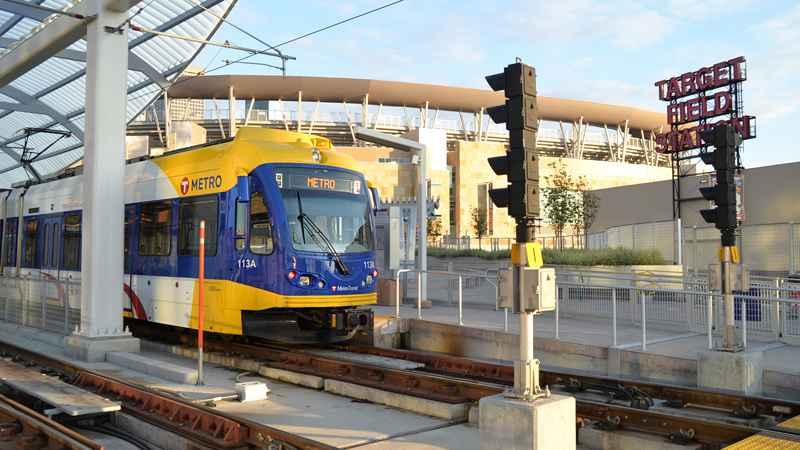‘We have to be honest about what we’re seeing’: Transit leaders, riders react to light rail safety investigation
[anvplayer video=”5040160″ station=”998122″]
Calls for improved safety on the Metro Transit light rail in the Twin Cities continue to intensify after a 5 INVESTIGATES report detailed frequent drug use, drinking and crime on trains and platforms over the last two years.
“We have to be very honest about what we’re seeing and where we can help,” said Deb Barber, chair of the Metropolitan Council’s transportation committee. “That’s why I really welcome this conversation that you’ve started with the public health side of things because it’s really critical.”
5 INVESTIGATES has been following public safety issues on public transit for more than a year by interviewing riders, operators, and transit officials as well as analyzing police reports and videos obtained through the Minnesota Data Practices Act.
“Something needs to be done,” wrote one of the hundreds of people who reacted to a story earlier this month that showed widespread drug use on Green and Blue line trains.
Transit leaders have repeated that safety remains a top priority and said they welcomed the conversation about how to address it.

[Metro Transit via Flickr]
But the most recent release of more than a dozen surveillance videos and police reports illustrates how difficult that may be.
Cameras at stations along both the Green Line and Blue Line recorded fights and assaults that required Metro Transit police to intervene.
Just last month, an operator demanded police escorts on and off trains because of safety concerns at the Franklin Station in Minneapolis. 5 INVESTIGATES recently obtained a recording of the operator’s phone call to Metro Transit’s rail patrol center.
“I had gotten off three out of five days and been literally afraid to walk down that platform,” the operator said. “It doesn’t matter when you’re doing relief, it’s not safe to do so.”
Key to recovery
Barber says improving safety is a key to increasing ridership on Metro Transit which plunged during the pandemic.
“I know we’ve taken some proactive [steps] and it’s really taking the time to make sure that we’re constantly looking at ourselves and figuring out what we can do better,” Barber said.
Barber points to the addition of a real-time or “live” security camera system in the last 18 months as one of the ways Metro Transit has tried to address safety concerns. She also continued to push for unarmed transit inspectors or ambassadors to provide an additional presence on trains.
Charlie Zelle, the chair of Met Council, made similar comments in an interview with 5 INVESTIGATES in January, but so far, specific legislation to address safety on trains has yet to move forward.
Mixed messages
Metro Transit released the videos of wide-ranging safety issues on the light rail after 5 INVESTIGATES submitted a series of data requests over the last 18 months.
One member of Metro Transit’s communications team appeared to dismiss the significance of the videos in a social media post responding to the most recent 5 INVESTIGATES report about drug use on trains and platforms.
“Constant surveillance, while a helpful law enforcement tool, also makes this low-hanging fruit for broadcast media,” wrote Drew Kerr, an internal communications manager for Metro Transit.
However, Metro Transit General Manager Wes Kooistra said the reporting on those videos revealing the depths of the crisis deserved a broader discussion among transit leadership, according to internal emails obtained by 5 INVESTIGATES.
“It really reinforces what we have been saying about health care/social services gaps of untreated mental health and chemical addiction playing out on our trains and at our stations and other facilities,” Kooistra wrote.
Barber echoed that sentiment during a recent interview.
“I want to make sure people understand that we know riders’ experiences or operators’ experiences are real,” she said.
Surveying riders
Last year, Met Council partnered with the nonprofit Citizens League to directly ask riders about safety and the role of police on Metro Transit. Transit leaders launched the effort after the killing of George Floyd and the civil unrest that followed.
Organizers of the community safety survey have been collecting responses through online surveys, virtual forums, and in-person interviews. Marika Pfefferkorn is the co-founder of the Twin Cities Innovation Alliance and helped lead the discussions.
“We believe that this three-pronged approach will really deliver a voice to the Metropolitan Council that they have not heard,” Pfefferkorn said.
She expects a full report to be delivered to the Met Council in August before the agency conducts its own review of Metro Transit Police.
“By collecting information in this way, they might ask questions in the review that would never come up through a formal process,” Pfefferkorn said.